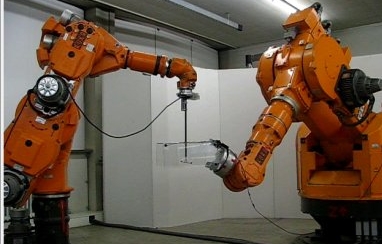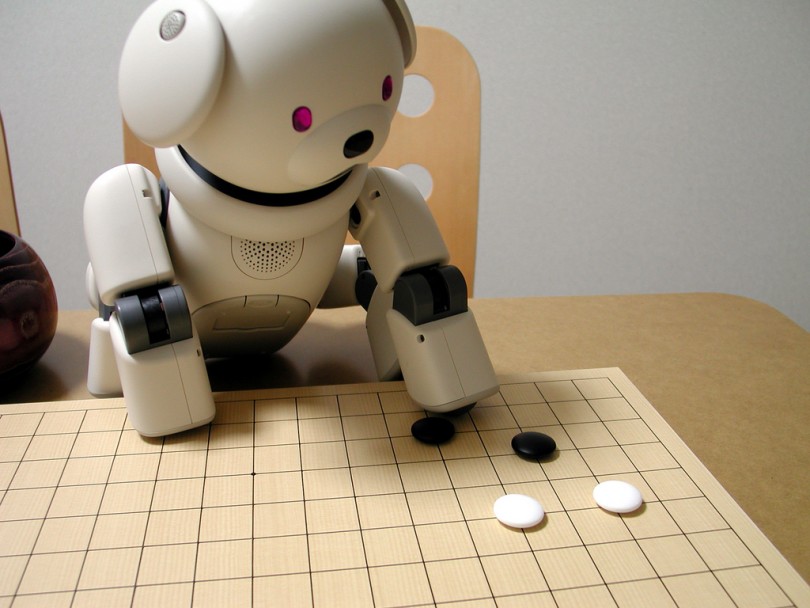aNewDomain — Japan’s unique problem of its economy stagnating stems from a declining birthrate, a senior population that continues to grow and a historic policy that disallows immigration. This brings the issue of the state of the world’s third largest economy into sharper focus. Robot technology may just be the country’s answer.
A Robotic Future
 The PARO Therapeutic Robot — also known as the PARO Pet — is a small pet-shaped robot designed to stimulate patients with dementia and Alzheimer’s. The robot opens and closes its eyes, is modeled after a seal and seems to do its job well. But robot pets are not the real solution to the fastest-aging society in the world.
The PARO Therapeutic Robot — also known as the PARO Pet — is a small pet-shaped robot designed to stimulate patients with dementia and Alzheimer’s. The robot opens and closes its eyes, is modeled after a seal and seems to do its job well. But robot pets are not the real solution to the fastest-aging society in the world.
An article from McKinsey Quarterly states:
Japan is the world’s oldest country — 25 percent of its people are aged 65 or over. By 2040, that ratio is estimated to rise to the historically unprecedented level of 36 percent. The population of Japan nearly tripled in the 20th century, peaking at 128 million in 2010. But with a falling birth rate, one of the world’s longest life expectancies, and close to zero net immigration, the country is headed for not only a uniquely high ratio of seniors but also a sharp downturn in its total population (Exhibit 1).”
Japan is a homogeneous country, and that’s how they want to stay. Robots offer a solution that does not entail migration of foreigners, and in theory, would allow population levels to remain low.

Japanese culture has always been on the forefront of the technology industry. The country welcomes the robotic revolution as one fast-paced solution to its current problem of hyper-aging and declining population growth. The driving motive is to create a new society, with a high GDP, without making Japan more ethnically mixed.
Takako Ito, the assistant press secretary for the Ministry of Foreign Affairs, said that many Japanese grew up on robot stories like “Astro Boy.”
“It’s this idea of humans and machines living together in peace.”
This mentality gives Japan an incentive, much more than Western countries, to dominate the still-emerging market for high-end robotics. The Japanese workforce is used to the idea of a manufacturing- and technology-oriented economy and already has large, adaptable assembly plants ready to go.
The Western world, meanwhile, is scared of the “Second Machine Age,” as described in the book by Andrew McAfee and Erik Brynjolfsson, from MIT’s Center for Digital Business. Robots are certainly taking over a number of jobs, but the cultural acceptance of that future is very different.
Japan’s leaders want to bring on automated workers, drivers and supermarket checkout attendees. Immigration, it would appear, is not seen as a possible solution.
Other Possibilities
There are, of course, some more human-oriented solutions. One possibility is to help seniors continue to work in their old age. Raising workforce participation would help close the gap. In Japan, nearly 6.1 million people aged 65 and over work — about 20 percent of the total population in that age group.
Another possibility: just helping seniors to get to work. Drivers over 75 account for more than a quarter of the death toll by car accidents on Japanese roads. Driverless cars or enhanced dashboards for seniors are considered a solution, and it would do something to decrease the death rate and, of course, increase the working capability of the senior population.
These might make a small difference to a stagnating economy, and the “immigration revolution” is gaining small traction.
Will robots save the Japanese stagnating economy and its declining birth rate? Or do social planning and policy changes need to be urgently imposed? Japan will not last as the third largest economy if it does not embrace new ways.
For aNewDomain, I’m David Michaelis.
First screenshot: David Michaelis courtesy of PARO Therapeutic Robot
Second screenshot: David Michaelis courtesy of extremetech.com
Featured image: Japanese Robot via Flickr













